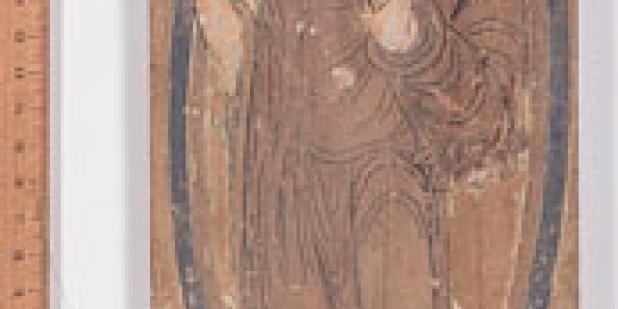Join us for a free one-day workshop for educators at the Japanese American National Museum, hosted by the USC U.S.-China Institute and the National Consortium for Teaching about Asia. This workshop will include a guided tour of the beloved exhibition Common Ground: The Heart of Community, slated to close permanently in January 2025. Following the tour, learn strategies for engaging students in the primary source artifacts, images, and documents found in JANM’s vast collection and discover classroom-ready resources to support teaching and learning about the Japanese American experience.
Red-Headed Mummies and Indo-European Languages: The Archaeology and Linguistics of Migration in 'Chinese' Eurasia
The Asia Institute presents a panel presentation with Elizabeth Barber and Melanie Malzahn on the discovery of red-haired mummies and an Indo-European language within the territory of modern China.

Placing together two international specialists on the material culture and linguistics of the “Silk Road,” this illustrated seminar presents an overview of current research on two of the most contentious archaeological and linguistic discoveries of modern times: the discovery of red-haired mummies and an Indo-European language within the territory of modern China. While the Tocharian language and the Urumchi mummies may not be related, their discovery has profound and, for some, unsettling implications for our understanding of the scale of migration and settlement across the Eurasian landmass in antiquity. Placing the archaeological and linguistic record of human movement and settlement into conversation with one another, the seminar is the first of a series of events sponsored by the UCLA Central Asia Initiative which bring together leading scholars of the archaeology and linguistics of the region.
The Mummies of Chinese Turkestan
Elizabeth Barber, Professor Emerita of Linguistics and Archaeology, Occidental College
Local archaeologists working in Chinese Turkestan have uncovered and continue to excavate numerous naturally mummified and spectacularly clothed bodies of Caucasians dating to the Bronze Age, 2500-4000 years ago. Since little was put into the graves besides clothing, Dr. Elizabeth Barber (one of the few experts on prehistoric Old World textiles) was invited to accompany an expedition from the University of Pennsylvania to Western China, to help determine facts about these displaced westerners. Just why, when, and from where did these folk enter the Tarim Basin to become the area's first permanent inhabitants, more than 1500 years before the Chinese established the famed Silk Road from the east? Richly illustrated with photographs taken when she was there, her talk highlights the variety of scientific methods used to unravel these mysteries, and will include some discussion of the mummy exhibit coming to the Bowers Museum in Santa Ana next March.
Prehistoric Civilizations Around the Silk Road—The evidence from the Tocharian Languages
Melanie Malzahn, University of Vienna
Among the extinct languages merely known by manuscripts discovered along the Silk Road, the two languages Tocharian A and Tocharian B together constitute one of the twelve branches of Indo-European. Mostly dating from the period of the 5./6. to the 8./9. centuries CE, the Tocharian texts give us an insight into the monastic Buddhist culture of their speakers. But these documents keep quiet about pre-Buddhist culture. Internal linguistic probing can shed some light on the prehistory of the two languages, and enables us to reconstruct a common ancestor, i.e., Proto-Tocharian. Comparative linguistics can further tell us something about the relationship of Proto-Tocharian to the other branches of Indo-European. One popular linguistic theory states that Tocharian—much like Anatolian—has a special status among IE languages by having branched off earlier from the common proto-language than all other branches such as Indo-Iranian, Greek, etc. However, recent research does not support this claim. In my view, the basic grammatical system and lexicon of Tocharian do not seem so much different from those of the other branches of Indo-European. On the other hand, Tocharian A and B show some clear traces of influence from other languages, most notably Iranian languages. Moreover, to a certain extent they must have even undergone some influence from non-IE languages—among them agglutinating ones—, but the details about which language and what period are again hard to determine. Hence, while Tocharian has a significant impact on the reconstruction of the grammar of the PIE proto-language, the contribution of linguistics to reconstructing prehistoric civilization is, above all, by its own nature severely limited.
Featured Articles
Please join us for the Grad Mixer! Hosted by USC Annenberg Office of International Affairs, Enjoy food, drink and conversation with fellow students across USC Annenberg. Graduate students from any field are welcome to join, so it is a great opportunity to meet fellow students with IR/foreign policy-related research topics and interests.
RSVP link: https://forms.gle/1zer188RE9dCS6Ho6
Events
Hosted by USC Annenberg Office of International Affairs, enjoy food, drink and conversation with fellow international students.
Join us for an in-person conversation on Thursday, November 7th at 4pm with author David M. Lampton as he discusses his new book, Living U.S.-China Relations: From Cold War to Cold War. The book examines the history of U.S.-China relations across eight U.S. presidential administrations.




